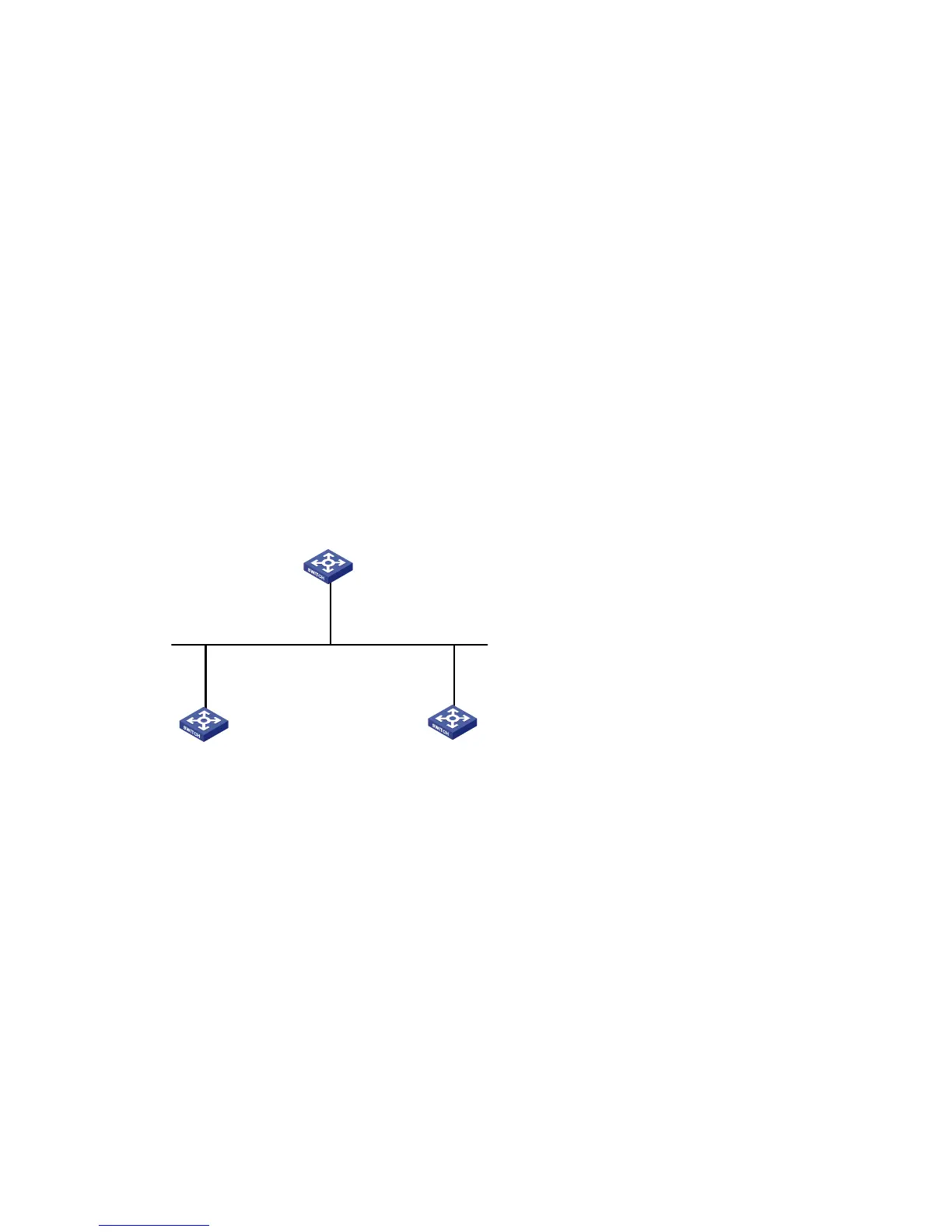24-16
As shown above, Switch B has been synchronized to Switch A, and the clock stratum level of Switch B
is 3, while that of Switch A is 2.
# View the NTP session information of Switch B, which shows that an association has been set up
between Switch B and Switch A.
[SwitchB] display ntp-service sessions
source reference stra reach poll now offset delay disper
**************************************************************************
[12345] 1.0.1.11 127.127.1.0 2 63 64 3 -75.5 31.0 16.5
note: 1 source(master),2 source(peer),3 selected,4 candidate,5 configured
Total associations : 1
Configuring the NTP Symmetric Mode
Network requirements
z The local clock of Switch A is to be used as the master clock, with a stratum level of 2.
z Switch B works in the client mode and Switch A is to be used as the NTP server of Switch B.
z Switch C works in the symmetric-active mode and Switch B will act as peer of Switch C. Switch C
is the symmetric-active peer while Switch B is the symmetric-passive peer.
Figure 24-8 Network diagram for NTP symmetric peers mode configuration
Switch A
Switch B Switch C
3.0.1.31/24
3.0.1.32/24 3.0.1.33/24
Configuration procedure
1) Configuration on Switch B:
# Specify Switch A as the NTP server of Switch B.
<SwitchB> system-view
[SwitchB] ntp-service unicast-server 3.0.1.31
2) Configuration on Switch C (after Switch B is synchronized to Switch A):
# Specify the local clock as the reference source, with the stratum level of 1.
<SwitchC> system-view
[SwitchC] ntp-service refclock-master 1
# Configure Switch B as a symmetric peer after local synchronization.
[SwitchC] ntp-service unicast-peer 3.0.1.32

